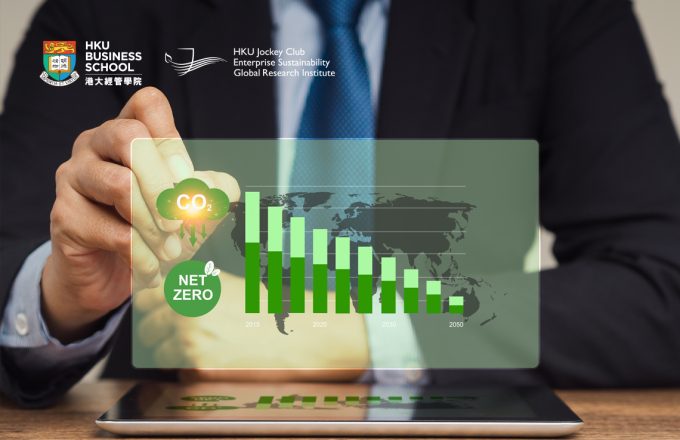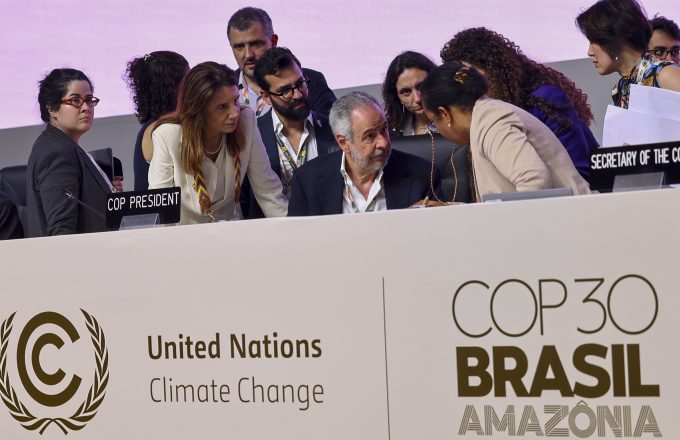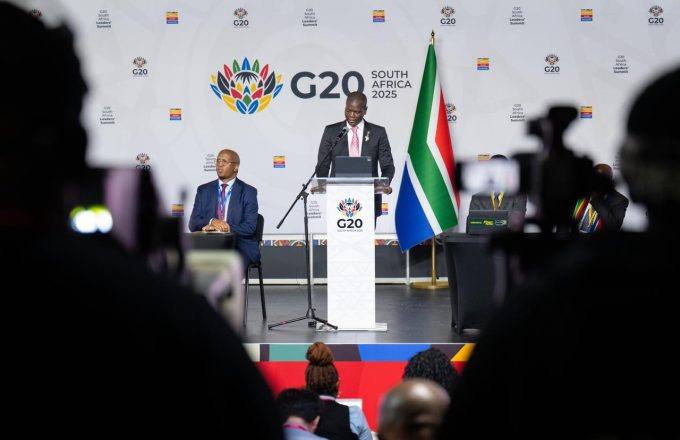Latest Research Publications
Research Insights
Global Scholars
Impact Stories
HKEJ Column
FT Chinese Column
In the Media
Does inward foreign direct investment (FDI) promote or inhibit the technological innovation of local firms? Prior research has generated mixed views and findings on this important question. To address this puzzle, we propose that FDI spillover and crowding-out effects may apply to different phases of innovation (i.e., idea generation and R&D implementation) respectively, which then leads to differential impacts of FDI on incremental and radical innovation. The results from a panel dataset of Chinese listed firms show that industry-level FDI is positively related to incremental innovation but has an inverted U-shaped impact on radical innovation. Furthermore, we find that technology gap reinforces the positive impact of FDI on incremental innovation while making its inverted U-shaped impact on radical innovation more pronounced, and when FDI local market focus is higher, the inverted U-shaped relationship between FDI and radical innovation is steeper. These findings reconcile the inconsistency regarding how FDI may affect local innovation and provide a novel analysis framework for the FDI literature.
December 2025
Journal of International Business Studies
While prior research has emphasized the economic threats posed by political risk, it is unclear how geopolitical risk (GPR), a supranational-level risk, affects global supply chain decisions. Drawing on the political economy perspective, we posit that GPR presents both opportunities and threats for multinational corporations (MNCs), depending on the political affinity between MNCs’ home and host countries. We also identify the risk-mitigation roles of MNCs’ political lobbying and market diversification. Using panel data from publicly listed MNCs in the US, we find that host-country GPR increases MNCs’ first-tier supply base when home–host country political affinity is high, but decreases when political affinity is low. Moreover, the positive effect of high-affinity host-country GPR on MNCs’ supply base is stronger, and the negative effect of low-affinity host-country GPR is weaker for MNCs with high levels of political lobbying or market diversification. These findings enrich the international business research and political economy perspective by elucidating both the opportunities and threats of GPR, and highlight the importance of risk-coping capabilities in managing GPR. These findings also provide insights for MNCs to adapt their strategies amid GPR by leveraging home–host political affinity, engaging in political lobbying, and pursuing market diversification to mitigate geopolitical challenges.
December 2025
Journal of International Business Studies
Our paper examines analyst reports and online stock opinion articles which recommend buying stocks that, based on the literature, trade at high prices and earn low future returns ("short-leg securities"). Using a textual analysis, we test whether the justifications primarily (1) emphasize safe-haven qualities, (2) indicate exuberance, or (3) highlight lottery-like features. Our results strongly point to (3). We subsequently validate our text-based inferences through a survey of institutional and retail investors with long positions in short-leg securities. Overall, perceived upside potential appears to play a material role in driving investor demand for stocks in the short legs of anomalies.
December 2025
The Review of Financial Studies
Key Takeaways Net-zero portfolios (NZPs), managing over $130 trillion USD in assets, align financial performance with climate goals. These portfolios reward firms that actively reduce emissions while excluding those lagging behind, driving market incentives for decarbonization.
The study introduces distance to exit (DTE), a forward-looking metric that measures a firm’s risk of exclusion from NZPs based on its carbon footprint and decarbonization efforts.
Firms with higher DTEs—seen as safer from exclusion—tend to have higher valuations but lower expected returns, highlighting the market’s pricing of carbon-transition risks.
DTE serves as both a risk measure and a catalyst for action, incentivizing firms to accelerate decarbonization to remain in NZPs, while enabling portfolios to achieve up to 95% reductions in carbon intensity without sacrificing sector diversification. Source Publication:
10 Jan 2025
Research
Key Takeaways The agricultural export value of Brazil has quadrupled over the last two decades due to rising global demand.
Brazil’s agricultural export boom drives deforestation: between 1997 and 2019, trade-induced agricultural expansion led to the loss of 3.6 million hectares of forest.
Trade-induced deforestation causes severe health consequences: it results in over 700,000 premature deaths, primarily from cardio-respiratory diseases linked to pollution from deforestation in upwind areas.
The economic cost of these deaths is estimated at $513 billion USD—about 18% of Brazil’s total agricultural export value during the same period.
These findings highlight the negative health impacts of trade-induced deforestation and the resulting regional inequality, because mortality costs and economic benefits are not always shared by the same populations. Source Publication:
8 Jan 2025
Research
Key Takeaways This study develops a theoretical framework to explore how carbon taxes and financial market tools (e.g., sustainability-linked loans and bonds) interact in reducing carbon emissions.
Carbon taxes remain the most effective tool for achieving emission reductions and increasing welfare but are often politically constrained.
Carbon-contingent financing provides an alternative incentive for standard agents to adopt green technologies, but its effectiveness depends on the financial resources of environmentally motivated agents who are funding the transition.
Although carbon taxes and market-based solutions can coexist, carbon-contingent financing may undermine political support for taxes, potentially reducing their overall effectiveness in addressing emissions.
The model’s predictions emphasize the need for a balanced climate strategy, whereby carbon taxes and financial market solutions complement each other by targeting different regions or sectors with distinct characteristics. Source Publication:
5 Jan 2025
Research
While computer languages may sound alien to economics, I aim to showcase that good programming skills are conducive not limited to economic research, it can also open up endless career possibilities for you in the business world.
31 Jan 2022
Economics
As a teacher, I will push myself to understand the expectations of local employers' and the market dynamics of Hong Kong.
18 Jan 2022
Finance
As a science person, I am impressed by our students' strong business acumen. But as a teacher, other than teaching them how to use quantitative tools to make scientific claims, I also hope that I can encourage them to continue to stay inquisitive about the world and apply their classroom knowledge for the betterment of the society.
5 Jan 2022
Marketing
For many electric vehicle owners in Hong Kong, driving around the car park near their home after work in search of an available charging spot has become a daily routine; on weekends, there are only a handful of charging spaces at shopping malls.
10 Dec 2025
Faculty
Tropical forests are disappearing at an alarming rate. In 2024, global losses of primary tropical forests reached about 6.7 million hectares, an increase of nearly 80% compared with 2023 [Note 1]. The 30th United Nations Climate Change Conference (COP30), held last month in Brazil, has been regarded as the most critical climate summit since the Paris Agreement.
3 Dec 2025
Faculty
When the global political and economic environment is volatile and the outlook extremely uncertain, global governance naturally becomes disorderly. One of the main platforms for global governance today is the G20.
26 Nov 2025
Faculty
A few weeks ago, the parents’ WeChat group of a top international school in Hong Kong blew up. It all started with one mother’s dilemma: “The essay written by AI is so much better than my daughter’s. Does she still need to learn how to write?” Another father immediately replied: “I’ve already signed my son up for three programming classes. In the future, kids who don’t know how to use AI will definitely be eliminated.”
10 Dec 2025
Against the backdrop of the global Web 3.0 wave, which is driving the continued expansion of the virtual asset market and reshaping the international financial order, building a balanced and sound local Web 3.0 ecosystem has already become a pivotal lever for a breakthrough in Hong Kong’s financial development.
27 Nov 2025
Automation and artificial intelligence (AI) are upending the traditional international trade landscape, giving developed countries endogenous comparative advantages in industries that were once intensive in low-skilled labor, thereby reversing the traditional advantages of developing countries. According to the latest trends in 2025, this shift has accelerated the restructuring of global supply chains and has exacerbated trade inequality.
13 Nov 2025
At the New Vision Economic Summit 2025, hosted by Sing Tao News Corporation, Prof. Heiwai Tang, Associate Vice President (Global) of The University of Hong Kong and Associate Dean of HKU Business School, and Prof. Zhenhua Mao, Professor of Practice in Economics at HKU Business School and Member of the Chief Executive’s Policy Unit Expert Group, shared insights on how fierce domestic competition is driving Chinese enterprises toward global markets.
12 Dec 2025
Faculty
A few weeks ago, the parents’ WeChat group of a top international school in Hong Kong blew up. It all started with one mother’s dilemma: “The essay written by AI is so much better than my daughter’s. Does she still need to learn how to write?” Another father immediately replied: “I’ve already signed my son up for three programming classes. In the future, kids who don’t know how to use AI will definitely be eliminated.”
10 Dec 2025
For many electric vehicle owners in Hong Kong, driving around the car park near their home after work in search of an available charging spot has become a daily routine; on weekends, there are only a handful of charging spaces at shopping malls.
10 Dec 2025
Faculty






























